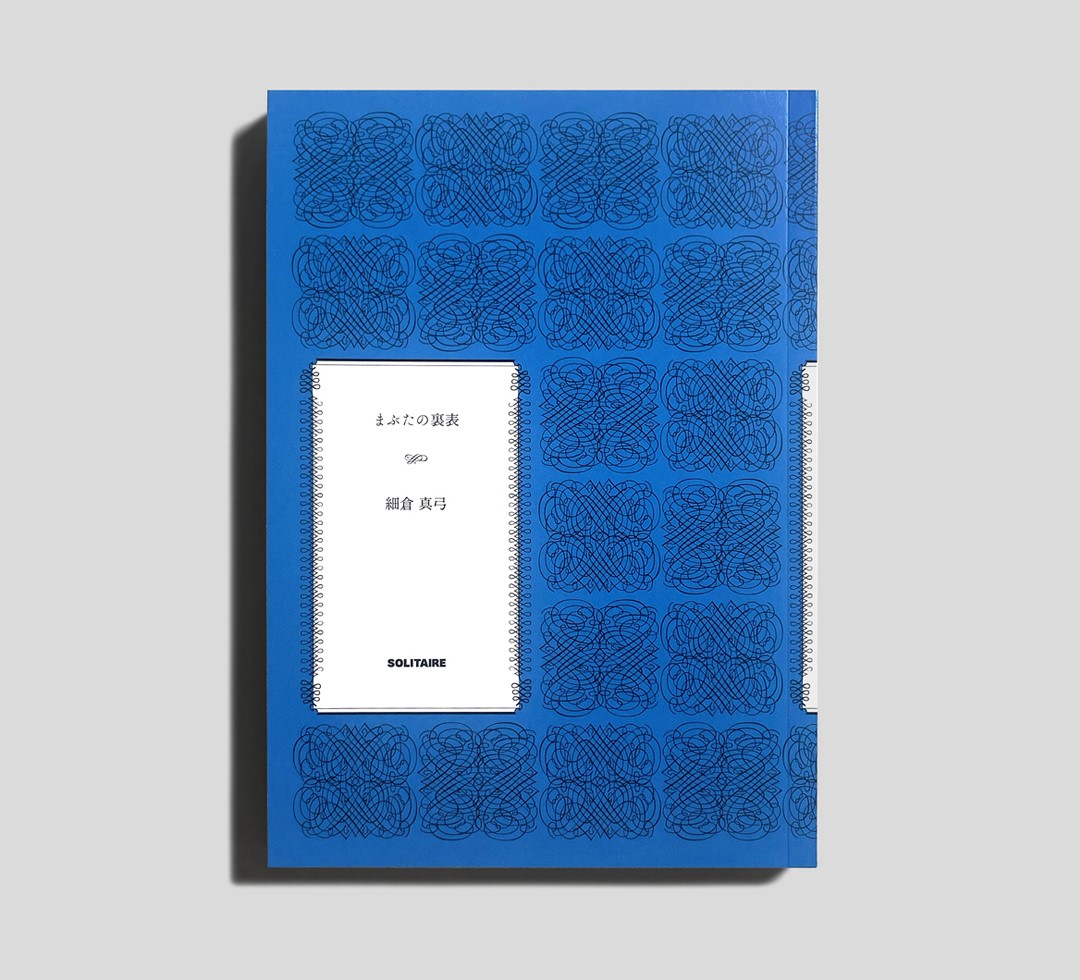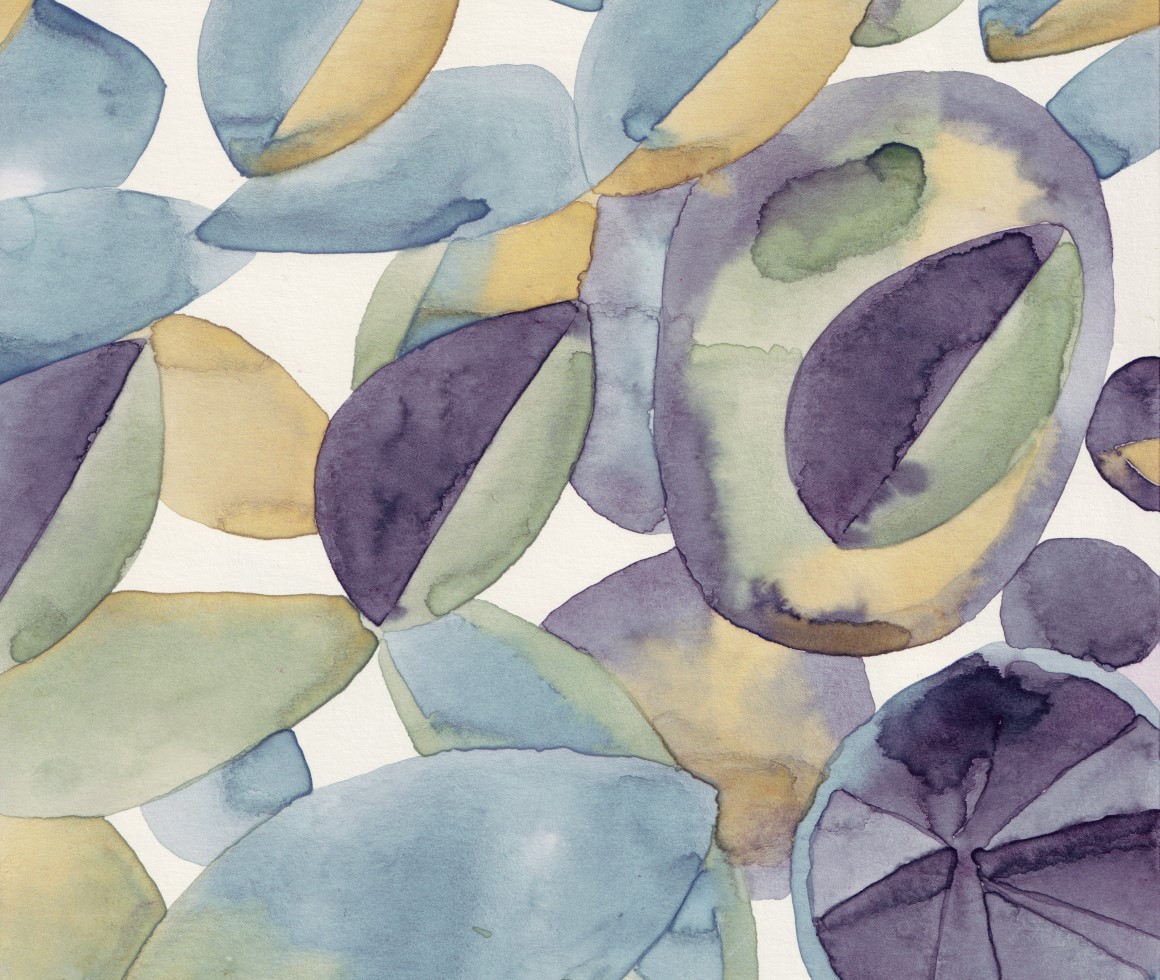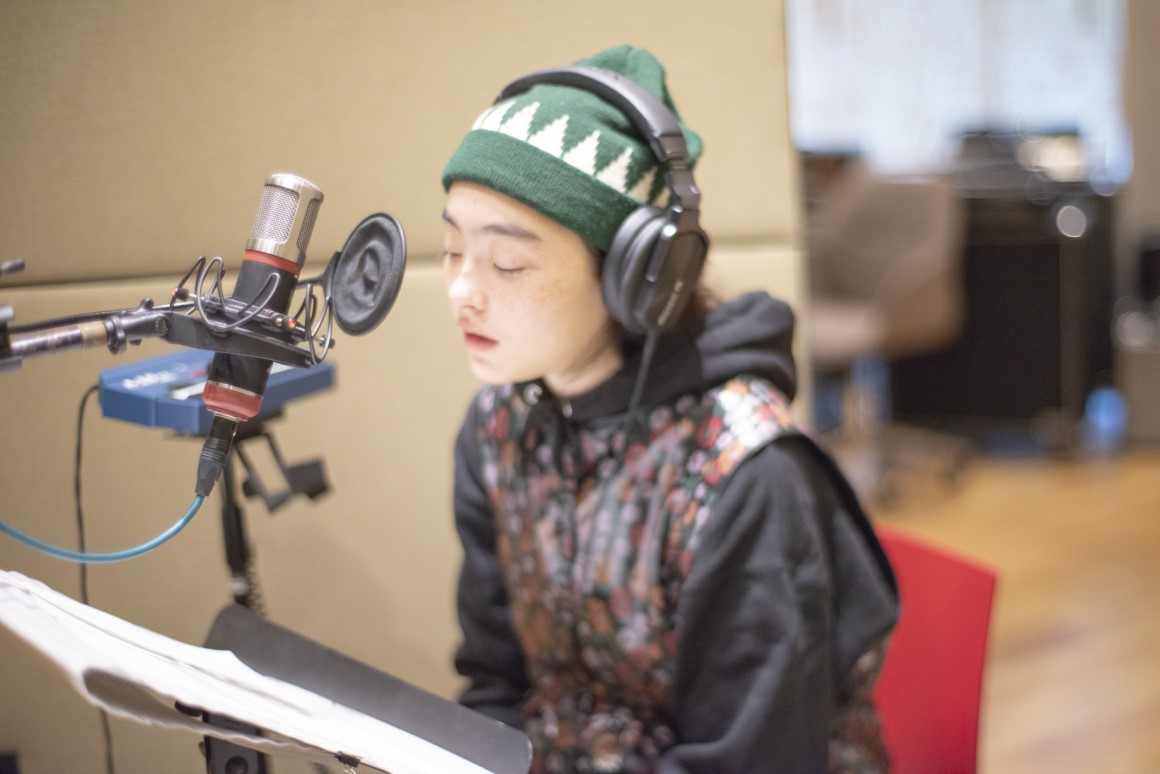コロナ禍のもと、日常にすっかりなじんだ"オンライン"。便利な一方で慣れもあり、情報を”消費する”ことに批判的な目もありつつも、膨大な情報の中から予期せぬところでヒントを見つけることもあるものです。たくさんの出会いに満ちた場所、その格好のサンプルのひとつだったのが、昨年の緊急事態宣言をきっかけにリアルではなくオンラインでの開催に踏み切ったVirtual Art Book Fairでした。そのVABFのハイライトを、東京を拠点に活動する編集者・リサーチャーのベン・デイビスさんよる体験レポート形式でいま一度振り返ります。コロナ禍のいま求められる、情報との出会い方とは――
"Online" has become a part of our daily lives under the Covid-19 crisis. While it's convenient, it also takes some getting used to, and there is a critical eye to "consuming" information, but sometimes you can find hints in unexpected places among the vast amount of information. One of the best samples of a place full of encounters was the Virtual Art Book Fair (VABF), which they decided to hold online instead of in real life in the wake of the emergency declaration last year. Ben Davis, an editor, and researcher based in Tokyo looks back and reports on the highlights of VABF. Let's think about the best way to encounter information in the Covid-19 crisis.

過去10年間にわたり、TOKYO ART BOOK FAIR(以下、TABF)は、創造性とコミュニティ、出版の力をユニークに融合させたイベントとして、東京都内のさまざまな場所で開催されてきた。アートセンターや大学のキャンパス、カルチャースペースなど、あらゆる場所で毎年催されるTABFは東京の年間のカルチャーシーンのハイライトとなっている。昨年のTABFが新しい、”仮想”の会場で開催されることが発表されたとき、私はふと思った。このフェアがデジタル体験としてどのように変換されるのだろうかと。日常生活での多くのことがオンライン化されているいま、仮想のブックフェアに参加することはどのように感じられるのだろう?
Over the past decade, the Tokyo Art Book Fair (TABF) has brought its unique mix of creativity, community, and publishing prowess to a range of venues throughout the city. Art centres, university campuses, and cultural spaces have all played host to the annual event, which has become a highlight of the cultural calendar. When it was announced that last year’s TABF would be held at a new, virtual venue, I began to wonder how the fair would translate to a digital experience. At a time when so many elements of daily life have shifted online, how would it feel to attend a virtual book fair?
午後早くVirtual Art Book Fair(以下、VABF)にログインすると、TABFではおなじみの光景であるピンク、グレー、紫を基調とした柳澤孝彦設計による東京都現代美術館(略称MOT)が迎えてくれた。美術館の中には、出展者やイベント、昔ながらの掲示板風のエリアなどへのリンクを示すオブジェが並んでいる。ワンクリックで、私の旅 ―ここに紹介するいくつかの新鮮な出会いや発見につながる― は始まった。
It was early afternoon by the time I logged in to the Virtual Art Book Fair (VABF), where I was greeted by the familiar sight of the Takahiko Yanagisawa-designed Museum of Contemporary Art (MOT), albeit rendered in shades of pink, grey, and purple. Inside the museum, an assortment of objects provided links to exhibitors, events, and an old-school bulletin board. With a single click, my journey was underway, leading to fresh encounters and discoveries, some of which I’ll share below.
じゃがいも
ブラウンポテトにサツマイモ。スライスしてチップスに。フライドポテトにカット。根菜類のでんぷん質はVABFの主役らしくはないけれど、会場のあちこちで目立っている。スポーツ用品から海の動物まで、じゃがいもはさまざまなかたちで登場する ―生のまま、調理したまま、さらには封鎖されたエリアにまで。バーチャル空間の会場設計を担当した萩原俊矢は、レモンやキノコの使用も検討したそうだが、このじゃがいもにこそ、長年のフェアで期待されてきた遊び心を見出したのだった。日常的なものであるじゃがいもによるこの珍しいコレクション、それをとおして誘導することで、ドロップダウンメニューや従来のリンクに新鮮な変化をもたらした。
Potatoes
Brown potatoes and sweet potatoes. Sliced into chips. Cut into fries. The starchy root vegetable was an unlikely star of the VABF, featuring prominently throughout the venue. Among objects ranging from sports equipment to sea animals, potatoes appeared in various forms — raw, cooked, and in cordoned-off areas. Shunya Hagiwara, who designed the venue, also considered the use of lemons and mushrooms, but in the potato he found an air of playfulness that we have come to expect from the fair over the years. Navigating through this unusual collection of everyday objects provided a refreshing change to drop-down menus and conventional links.
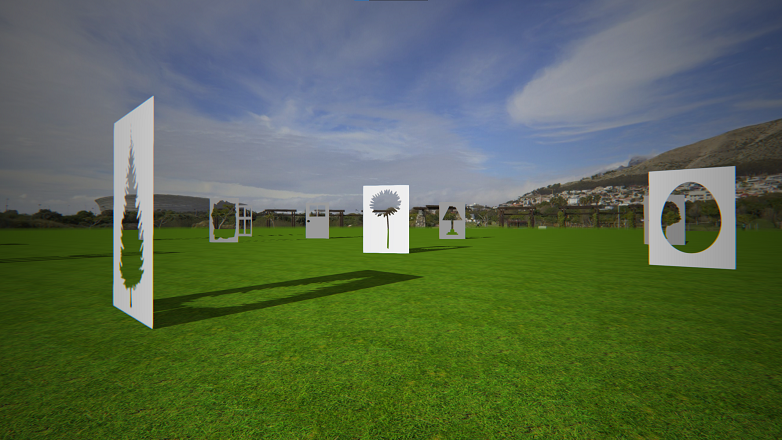
いくつかの視点
当初ラファエル・ローゼンダールが仮想空間に”歩くことのできる”彫刻公園を計画していることを知ったとき、何が期待できるのかよくわからなかった。それでも、そのシャドウ・オブジェクト彫刻公園に入ってみると、淡い色のパネル ―大規模なステンシルのような― は生気を帯びて、周囲の風景を独自の方法でフレーミングしているように見えた。その後の移動のたびに切り取られた部分のシーンが変化し、それによって公園を探検したり、さまざまな角度からアート作品を見ることができるようになった。屋外の彫刻は、私たちが風景や周囲のをものをどのように見るかを形作ることができるのだ。この作品を仮想的に体験し、いつの日か木場公園のMOTとともにこの作品を実際に見ることができたらいいと思っている。
Points of view
After reading about Rafaël Rozendaal’s plans for a “walkable” sculpture park in a virtual space, I wasn’t quite sure what to expect. Yet upon maneuvring my way into the Shadow Objects Sculpture Park, the light-coloured panels — resembling large-scale stencils — seemed to come alive, framing the surrounding landscape in their own unique ways. Each subsequent move altered the scenes within the cut-out sections, encouraging you to explore the park and view the art from different angles. Outdoor sculptures can shape the way we view the landscape and our surroundings. After experiencing this work virtually, I hope we’ll be lucky enough to see it one day in real life, rendered alongside MOT in Kiba Park.
フルーティジャングルよりこんにちは
アーティストの河井美咲の作品は、喜びと愛とユーモアに満ちている。しかし、今回のVABFへの作品は、絵画やインスタレーションというよりは、彼女の日常生活を垣間見ることができるものだ。本作”Hello from Juicy Jungle”は彼女の拠点であるロサンゼルスで4日間にわたり撮影された。河井と彼女の家族が絵を描いたり、ダンスをしたり、山でハイキングをしたり、手作りのZINEを読んだりしているようすが記録されている。約1時間のあいだ、それは鮮やかな色彩の世界への窓となる。こういったフェアはつねに作品の背後にあるアーティストを発見する場であるが、この楽しさに満ちたドキュメンタリーは通常のトークイベントやブックサイニングとは少し違った何かを提供してくれた。
Hello from Juicy Jungle
Misaki Kawai’s creations are filled with joy, love, and an ample dose of humor. Yet rather than a painting or an installation, her contribution to the VABF was a glimpse into her daily life. Shot over four days in Los Angeles, “Hello from Juicy Jungle” documents Kawai and her family as they paint, dance, hike in the mountains, and read homemade zines. Almost an hour in length, it’s a window into a world of vibrant colours. The fair has always been a place to discover the artist behind the work, and this fun-filled documentary provided something a little different to a standard talk event or book signing.
合作のコラージュ
イベントのオンライン化が進むつれ、混雑した会場体験は遠い記憶のように感じられる。今回のVABFでは出展者とのビデオ会話やバーチャルブックサイニング、遠隔地のスタジオ訪問など、さまざまなタイプのオンライン共有体験が提供された。クリエイターの中には、これを機に創作の過程を公開する人も。東京で非常事態宣言が発令された2020年4月に結成された「Remote Collage」は、三者間のビデオ通話を使ったコラージュを制作。フェア期間中に何度もビデオ通話をストリーミング配信し、リアルタイムで人や場所、出会いのシーンを重ね合わせながら、周囲のようすを魅力的に表現している。
Collaborative collage
As events have shifted online, the experience of a crowded venue has started to feel like a distant memory. The online nature of the fair provided different types of shared experiences: video conversations with exhibitors, virtual book signings, and remote studio visits. Some creators took this opportunity to reveal their creative process. Formed in April 2020, during Tokyo’s state of emergency, Remote Collage creates collages using three-way video calls. The group streamed their calls several times throughout the fair, providing an engaging take on their surroundings, juxtaposing scenes of people, places, and encounters in real-time.
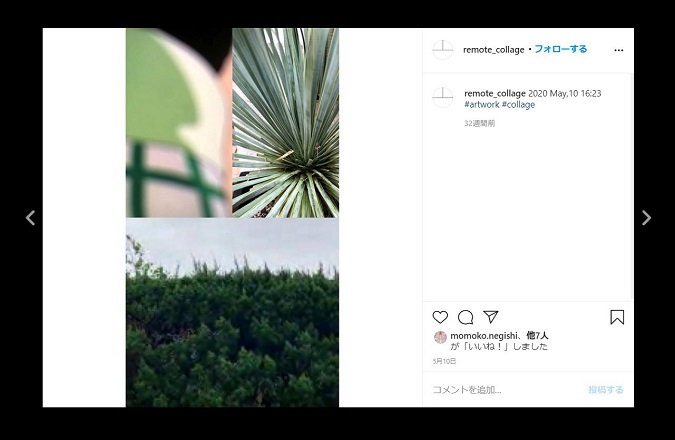
仮想空間に場をつくること
VABFには過去に何度も足を運んでいるが、今回はアートブックの豊富さを超えて、オンラインプラットフォームが表現やコミュニケーションを実験する機会を提供していることに惹きつけられた。昨秋のフェア終了後もウェブサイトと会場はいまだそこにあって ―美術館は開いていて、展示もオンライン上にあり、その風景も変わらない。現実世界を模倣するのではなく、新たな道を切り開くという考えのもと、VABFはバーチャルな会場とさまざまな体験方法を構築した。デザインの奇抜さと創造性に加えて、ハイカルチャーとローカルチャーの寄せ集めは、東京そのものを反映している。刻々と変化しながらも、どんどん高級化していく都市の中で、VABFのサイトは都市の文化の本質を捉えながらも、物理的な世界の現実に縛られない、新しいタイプの文化的な場の青写真を提示しているのかもしれない。
Virtual placemaking
Returning to the VABF a number of times, I was drawn to how, over and above the abundance of art books, the online platform provided a chance to experiment with expression and communication. Even after the fair’s completion, the website and venue have remained in place: the museum is open, the exhibitions are online and the scenery is unchanged. Built on the idea of charting a new path forward, rather than emulating the real world, the VABF constructed a virtual venue and various ways to experience it. In addition to the quirkiness and creativity of the design, the mish-mash of high and low culture was a reflection of Tokyo itself. In an ever-changing but increasingly gentrified city, the VABF site may well present a blueprint for a new kind of cultural venue — one that captures the essence of the city’s culture but is unbound by the realities of the physical world.









